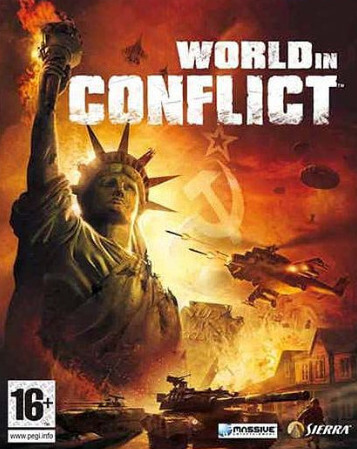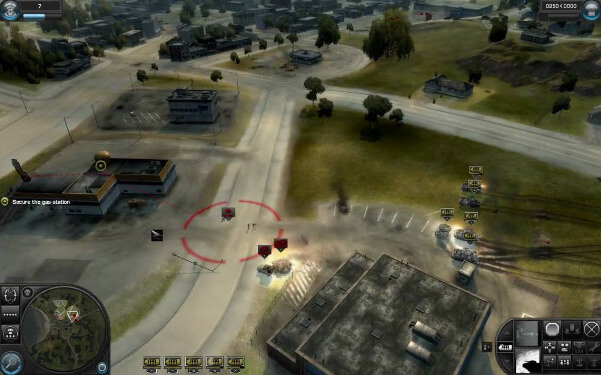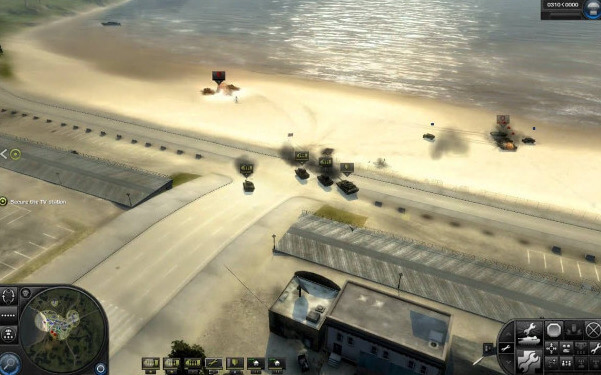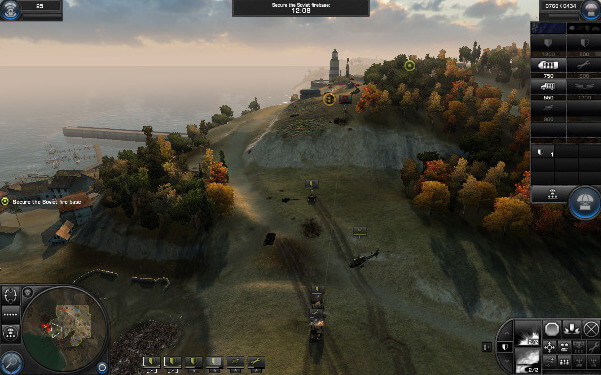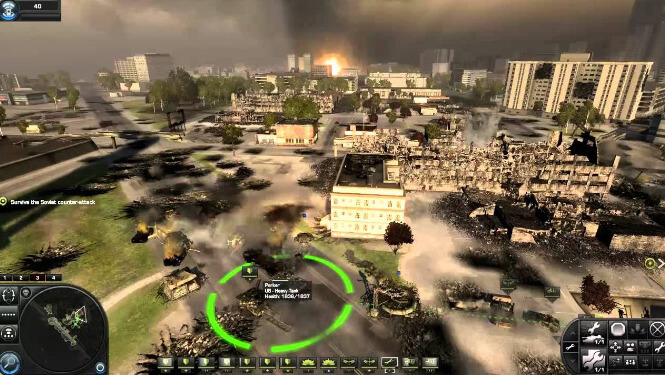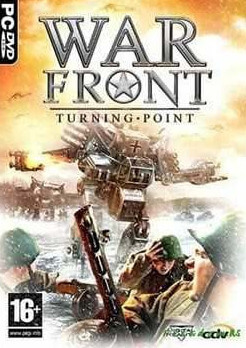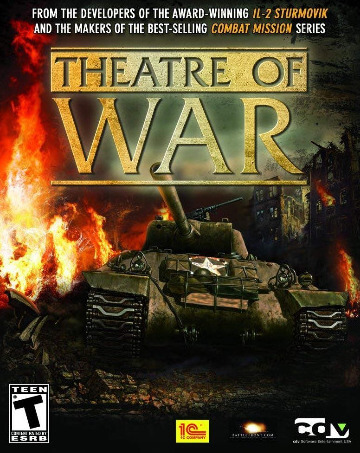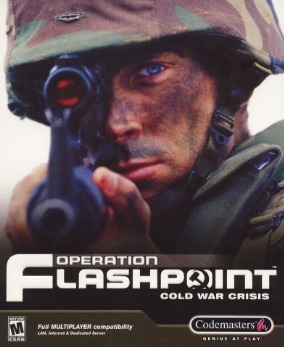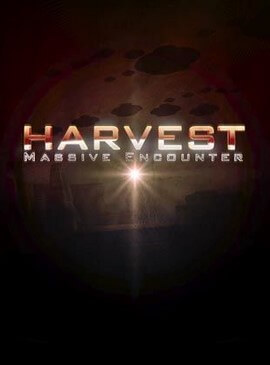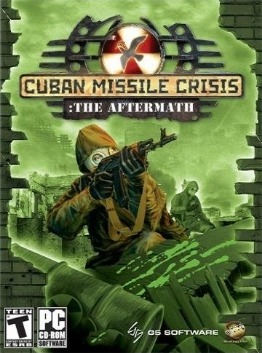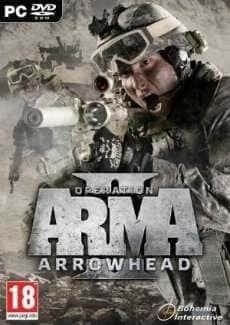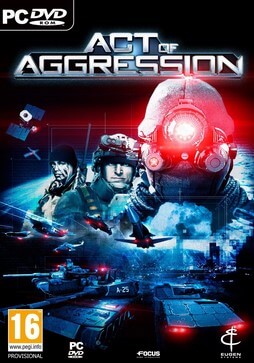World in Conflict focuses on real-time tactics (RTT) gameplay, in a similar manner to Ground Control, a game also developed by Massive Entertainment, in which players deploy units onto a battlefield and must carefully make use of them to achieve victory, making use of support assets to further assist them. World in Conflict contains three factions: the United States, Soviet Union, and NATO. While players may only play as US and NATO forces during the single-player campaign, all three factions can be used in multiplayer games.
During a game, players are given a pre-determined amount of reinforcement points, with which to purchase units with varying costs. Once the player deploys the units they purchase, they must wait 20 seconds for them to be airdropped to the field. If a unit is destroyed, the points are refunded to the player in order to allow them to bring in more units. During the single-player campaign, most missions vary what units the player can recruit, while some missions will offer the opportunity to recruit free units, though these cannot be replaced if destroyed. Each unit has strengths and weaknesses, such as mobile anti-air guns being most effective against enemy helicopters, and repair tanks being most effective at keeping vehicles and armor repaired. Each unit possesses a defensive ability, such as deploying smokescreens, while some units possess an offensive ability, such as marking targets for bombardment or using grenade launchers on enemy infantry. Once a unit's special ability(ies) has been spent, players must wait for them to recharge before they can be used again.
In addition to controlling units, players may also call in tactical aid by spending tactical aid points. Points are primarily earned from destroying enemy units in battle. Tactical Aids allow the player to call in anything, from airstrikes on enemy positions, the deployment of paratroopers, to launching carpet bombing raids and tactical nuclear strikes. Tactical aids can allow up to three deployments, after which the player must wait until the support has recharged. In the single-player campaign, players are restricted by what tactical aid they can use, which can change during a mission.
The game interface for World in Conflict has no framing in the game. A list of units occupies the bottom center, whereas the top right-hand corner contains the expandable reinforcement procurement list. The mini map is in the bottom left-hand corner, while the bottom right-hand corner contains the special abilities buttons (including unit formation). Players can also use a messaging system that is designed to allow conversation between individuals regardless of whether they are on the same server or playing the same game. World in Conflict features a fully rotational 360-degree camera.
Single-player
The single-player campaign places players in the role of Lieutenant Parker (voiced by Alec Baldwin), a United States Army officer, who takes command of a company of troops from both the US and NATO, and who narrates the events of the game's campaign prior to each mission; he neither speaks during missions and cutscenes, nor is his face shown. During missions, players take on enemies scripted for them to deal while the AI handles the remainder of action on the battlefield, though a large portion of the action is still focused on the player, which is in contrast to the approach used in RTS titles, in which players are in charge of whole armies and thus responsible for most of the action on the battlefield. Unlike other game modes, players are restricted in missions by what units they can deploy and what tactical aid they can call in, sometimes having to rely on the units they begin with and acquire during a mission.
The narrative of the single-player story owes much of its inspiration from both the Call of Duty and Medal of Honor series (see the 'Influences' section below)
Multiplayer
Multiplayer games support up to sixteen players and can be played on a LAN or over the Internet. Three types of maps are featured: domination maps, where players must control command points to win the game, assault maps, where one team defends a series of command points which the other teams assaults, and tug of war maps, where teams must fight to capture a series of command points on the front line, whereupon the line shifts towards a new set of points closer to the losing team. One side plays as either the United States or NATO, while the other as the Soviet Union.
In multiplayer gameplay the player may choose one of four roles in battle: infantry, air, support, or armor. The infantry role gives access to various infantry squads such as anti-tank teams, snipers, and light transport vehicles whereas armor allows players to use various classes of tanks, the dominant direct fire land combat unit of the game. Players choosing the air role have access to attack, scout, and transport helicopters. Finally, the support role contains anti-air, artillery, and repair units. Each role's basic units can be purchased by everyone but are more expensive for players with a different role. In addition, each role has its own exclusive units that aren't available for purchase by other roles.
The game ends when one side is completely dominant over the other, or when 20 minutes are up, in which case, whichever side is winning at the time is declared the winner. A bar is displayed at the top of the screen showing the status of both armies. After the game is over, the score sheet will be displayed, and the players' rank updated.
